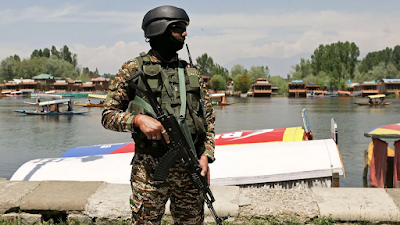Can India Really Stop River Water From Flowing Into Pakistan?
April 25, 2025
As tensions flare between India and Pakistan following a deadly militant attack in Kashmir, India has taken a bold step—suspending the decades-old Indus Waters Treaty (IWT). The move has sparked a wave of questions, chief among them: Can India actually stop river water from flowing into Pakistan?
What Is the Indus Waters Treaty?
Signed in 1960 and brokered by the World Bank, the IWT was a rare example of peaceful cooperation between the two nuclear-armed neighbors. It gave India control over the eastern rivers—Ravi, Beas, and Sutlej—while Pakistan received 80% of the western rivers—Indus, Jhelum, and Chenab.
Despite multiple wars and cross-border tensions, the treaty had endured—until now. India’s suspension of the treaty is a response to what it calls Pakistan’s support for terrorism, a claim Islamabad denies. Pakistan, in turn, has warned that cutting water flow would be treated as an "act of war."
Does India Have the Power to Stop Water Flow?
Technically, India is the upstream country, which gives it a geographical advantage. But experts say that India currently lacks the infrastructure to block or divert large volumes of water from the western rivers, especially during the monsoon or high-flow periods.
"Most of India’s hydropower plants in the region are run-of-the-river projects," says Himanshu Thakkar, a water resource expert. "They use flowing water to generate power without storing it in large quantities."
India has not even fully used its 20% share of the western rivers under the treaty, partly due to terrain challenges and delays in building large dams and storage infrastructure.
What Could Change?
With the suspension of the treaty, India no longer needs to share project plans or hydrological data with Pakistan. This could mean:
- Building new dams and storage systems without informing Pakistan
- Flushing silt from reservoirs without prior notice
- Stopping the flow of flood-related data, which could impact flood preparedness downstream in Pakistan
Experts believe any real impact on Pakistan would be felt more during the dry season, when water availability is naturally low and every drop matters.
Could India "Weaponize" Water?
The concept of using water as a geopolitical weapon—sometimes called a “water bomb”—has been raised. This could involve holding back water and releasing it suddenly to cause flooding downstream. However, experts caution that this is risky and could backfire, even flooding Indian territory since most Indian dams are located far from the border.
What’s China’s Role?
The regional water politics get even more complex when China enters the picture. China controls the upper reaches of both the Indus and Brahmaputra rivers and is currently building the world’s largest dam on the Yarlung Tsangpo, which flows into India as the Brahmaputra.
In 2016, following another attack in Kashmir, China blocked a tributary of the river, a move seen by some as strategic support for Pakistan. India fears similar disruptions could give China leverage over its water security in the future.
The Bigger Picture
India’s suspension of the IWT represents a dramatic shift in South Asia’s water diplomacy. Whether it results in concrete action or remains a political statement depends on what happens next—especially as both countries face increasing pressure from the international community to de-escalate.
But one thing is clear: in a region already burdened with climate stress, any disruption to water sharing agreements could have devastating consequences for agriculture, power, and livelihoods on both sides of the border.











0 comments:
Post a Comment